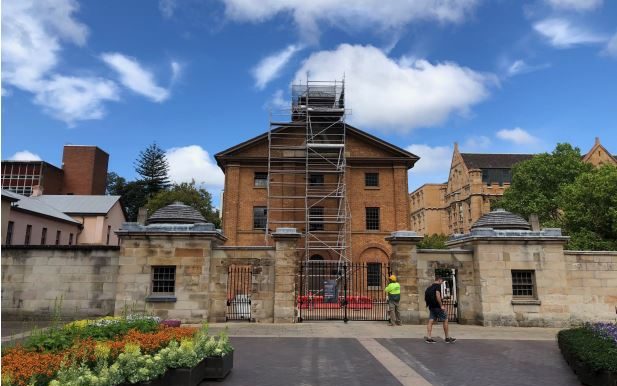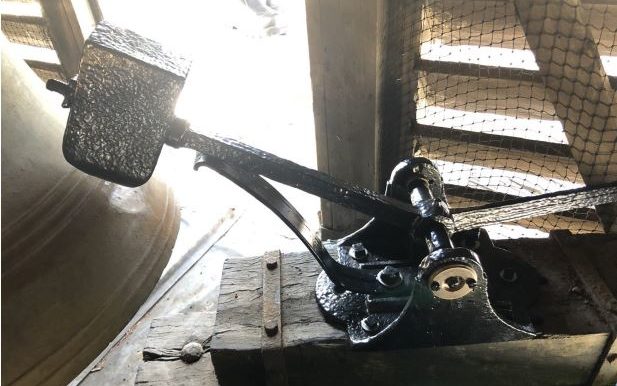Looking out across the centre of Sydney is the oldest continuously functioning mechanical public clock in Australia. Andrew Markerink from Master Clockmakers in Camden NSW tells of its recent restoration.
Hyde Park Barracks is one of only two UNESCO world heritage buildings in Sydney and the second building is the Sydney Opera House. These two remarkable buildings are of world significance and hold a special place in our history.

Commissioned by Governor Macquarie and designed by colonial architect Francis Greenaway, work on the Hyde Park Barracks commenced around 1816 and was completed in 1819. The feature of a clock helped the colony organise the convict workforce and proved an important landmark for the young colony. Public clocks were important parts of life during the period as the average person didn’t carry personal timekeepers and only the wealthy could afford a pocket watch. Public clocks therefore were relied upon to regulate society.

The current turret clock in the top of the building was made by Benjamin Lewis Vulliamy of London. Vulliamy was a clockmaker of world renown and was the clockmaker to the English monarchy. The clock has both great historical and aesthetic significance as it has now operated for the last 200 years in the heart of Sydney.
The clock and the building have many tales to tell and the clock’s face has looked out at over two centuries of Sydney’s development from a convict settlement to the sparkling jewel in the Land Down Under.
The convict history is not merely restricted to the building’s early history but is also linked to the colonial clockmaker James Oatley who fitted the first clock movement into the tower.
While the dial, hands and part of the original mechanism remain in operation, the original movement has been lost to history and the Vulliamy replacement in the early 1800’s has proved both a reliable and extremely accurate clock during its many years of service.

The clock is wound manually by climbing up to the platform at the top of the building where a large winding crank is attached to the clock to bring the weights up to the top of the building to run the bell strike and the hands.
Master Clockmakers of Camden were given the task in 2020 to restore the clock as it had ticked and struck without any major service for many decades with the result that it required substantial interventions to save the clock and keep it operating for many centuries to come. There was no surprise that after 200 years of running it required significant conservation work.

This restoration and conservation of the clock included a full restoration of the clock movement, conservation to the timber cabinet that protects the clock, restoration to the dial to stabilise the painted finish, the application of gold leaf numerals, as well as the repair to both hands that had become cracked and damaged over many years of bending and moving in the weather.
One of the many interesting features of the clock is the fact that the pendulum swings once every two seconds and is also two storeys long with the top of it up in the roof of the building and the bottom just above the floor on the level below.

This specialised and painstaking work took several months to complete and on completion the project team was awarded a National Trust prize for excellence.
The restoration was part of the of complete resign of the museum space with the now interactive displays providing a way to look back at the building’s early history and gain an insight into Australia’s history.
The clock is now back in operation and is performing in exactly the same way as it was when fitted. Two hundred years seemed to have sailed by with ease and it is expected the clock will be able to operate for at least another 500 years without needing any major components replaced. A remarkable achievement for a clockmaker in 1838.
Master Clockmakers and the team were proud to be part of this important piece of Australia’s history.